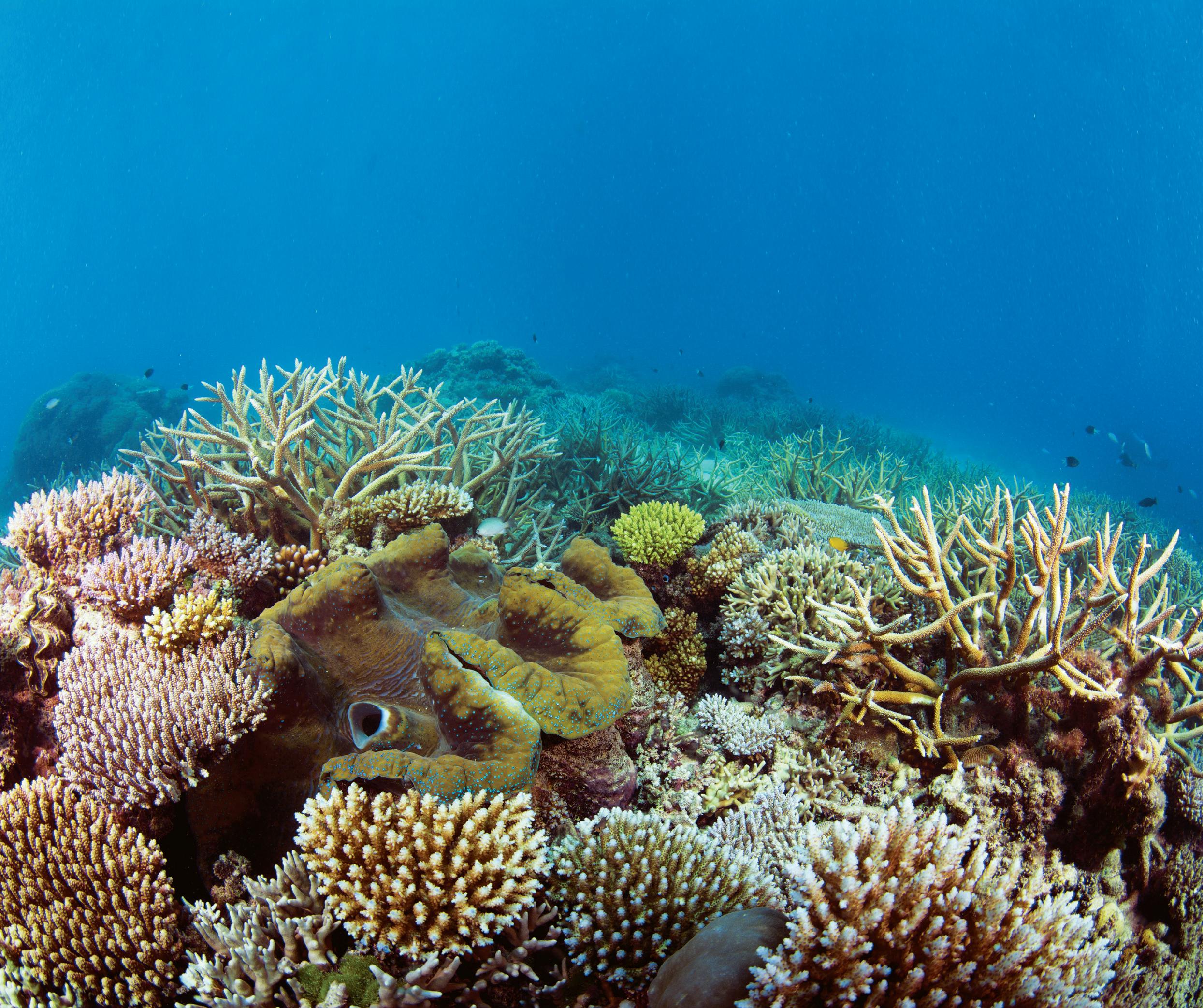
12 minute read
Open for business – where to dive in Australia post-COVID-19
from Scuba Diver ANZ #23
PHOTOGRAPHS BY ADRIAN STACEY, SIMONE CAPRODOSSI, JONATHAN MUELLER, MATT KRUMINS, KAREN GOWLETT-HOLMES, MICHAEL BARON, RODNEY FOX SHARK EXPEDITIONS, DAVID GORDON, SCOTT PLUME AND JOHANNA POOL
Few, if any countries in the world, can boast such a varied assortment of diving. From the vivid corals of the Great Barrier Reef to the spectacular kelp forests of the Great Southern Reef, from whalesharks at Ningaloo to leafy sea dragon at the Mornington peninsular. You can dive with great white sharks or swim with humpback whales. Perhaps witness
Advertisement
the mass migration of the spider crabs, visit one of the many beautiful islands, or dive one of the hundreds of wrecks that litter the shores of this diving Eden called Australia. The list of places to go to, and of creatures to see is almost endless. For a little inspiration, we have compiled a selection of world-renowned heavyweights and some lesser-known gems of Australian diving.
Queensland Where better place to start than in Queensland, home of the iconic Great Barrier Reef. This fantastic living structure is over 2,300km long, is comprised of over 2,900 individual reefs and 900 islands, and can be seen from space. But diving is not just limited to the GBR, with some amazing wrecks and spectacular dives around the Sunshine Coast, Brisbane and the Gold Coast.

Stunning array of corals
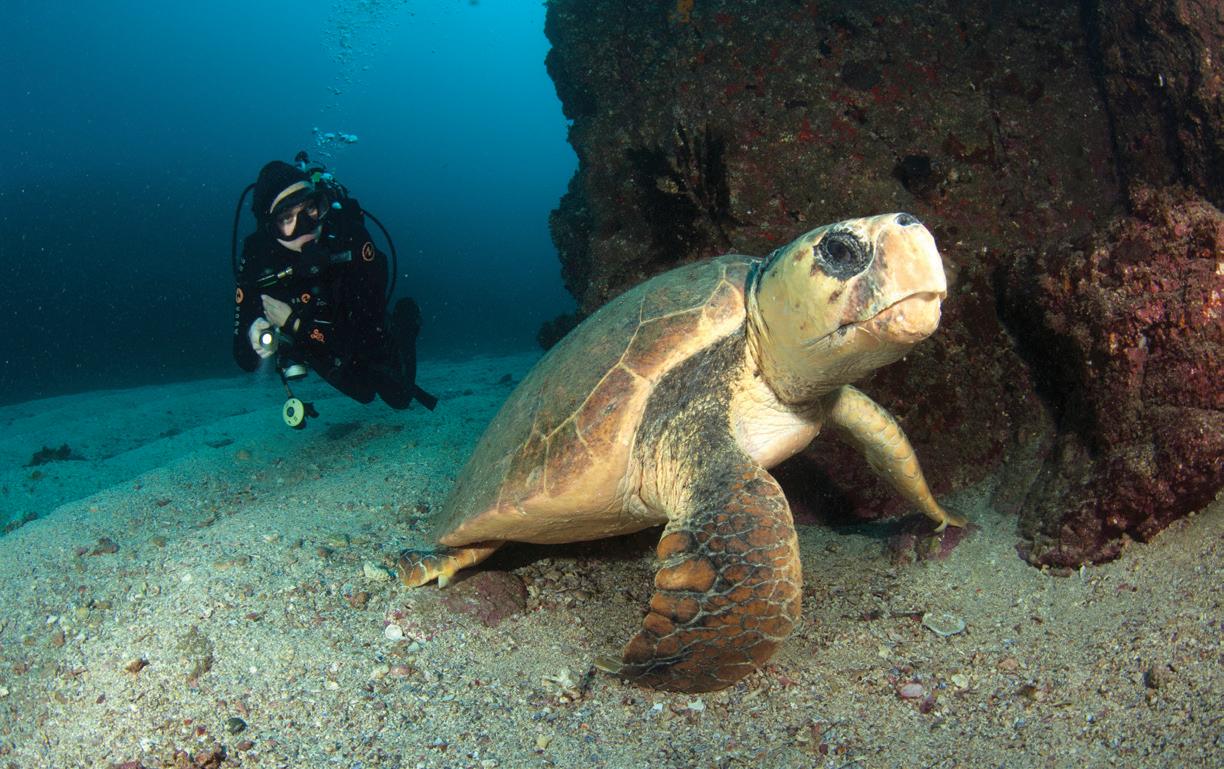
Turtle

Frogfish
NORTHERN GREAT BARRIER REEF | CAIRNS Cairns is the most-popular location to access the northern areas of the reef. Divers have the option of day trips out to the likes of Norman, Saxon or Hastings reefs or liveaboard trips to the more-remote Ribbon Reefs and Osprey Reef. I was lucky to be on the Spirit of Freedom for their final voyage before the lockdown came into effect. The waters were teeming with life, the hard corals on the Ribbon Reefs were pristine, and the soft corals at Osprey Reef were spectacular.
Mike Ball is currently operating five-day minke whale trips and will be running five-day tours to Osprey Reef and Cod hole from August. www.mikeball.com
Divers Den are open for courses and day trips to Norman Saxon and Hastings Reefs. www.diversden.com.au
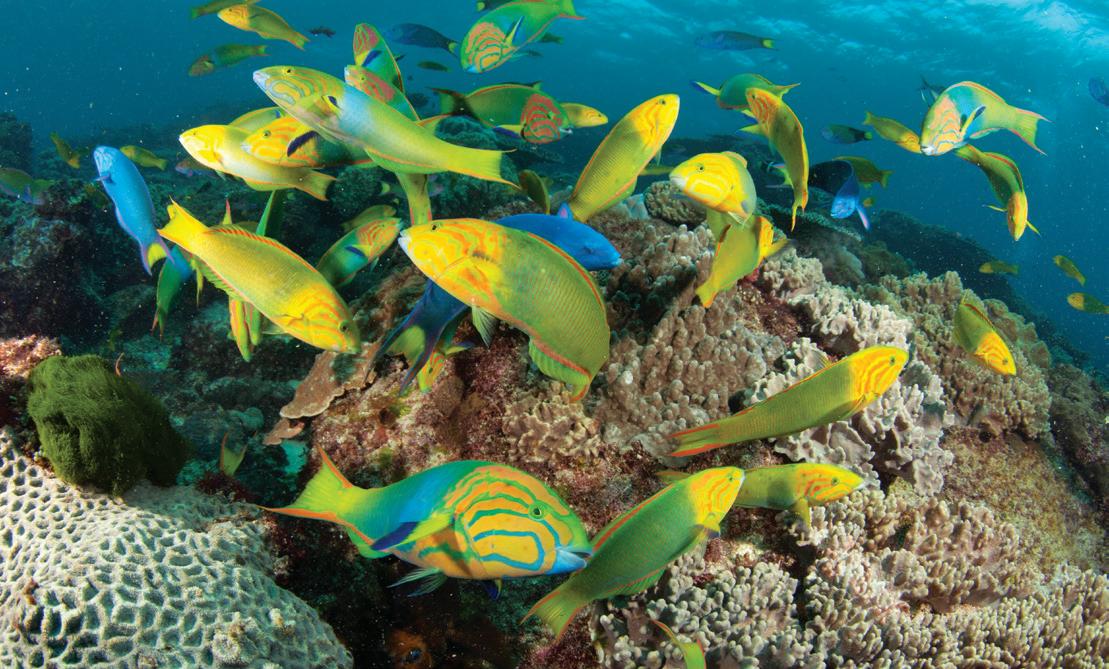
Moon wrasse
NORTH STRADBROKE ISLAND | BRISBANE Accessible by ferry from Brisbane, North Stradbroke Island attracts manta rays during the summer month and grey nurse sharks in the winter months. Deep gutters offer the ideal hiding place for loggerhead turtles and wobbegong sharks. If you are really lucky you might even see a humpback whale on its annual migration.
Manta Lodge is now open for business and taking bookings. www.mantalodge.com.au

The reefs are very healthy

SS Yongala
SS YONGALA | TOWNSVILLE Speaking of the spectacular, the SS Yongala is often touted as one of the best wrecks in the world, and with good reason. Resting on the sand at a depth of 30m, it is a beacon for marine life. Immense schools of fish swarm the coral-encrusted hull, huge rays, sharks and turtles frequent this oasis of marine life, while huge nudibranchs and numerous other critters call the Yongala home.
Adrenaline Dive are once again taking divers to the SS Yongala from their Townsville base. www.adrenalinedive.com.au

SS Yongala

Turtle
SOUTHERN GREAT BARRIER REEF
GLADSTONE TO BUNDABERG At the southernmost reaches of the Great Barrier Reef are the Capricorn and Bunker group of islands. Not quite as well-known as their northern counterparts, the diving in this region is every bit as stunning. Some of the region’s highlights include Heron Island. This is a tropical paradise with a wealth of beautiful dives, including Heron Bommie, which Jacques Cousteau even listed in his top ten dive sites. Lady Musgrave Island boasts pristine reefs set against the backdrop of a vast turquoise lagoon bustling with life, while Lady Elliot Island has become synonymous with the majestic manta rays which inhabit these waters year-round.
Heron Island Resort is open for business and also operates trips to Wilson Island for snorkelling. www.heronisland.com
Lady Elliot Island is open once again at a time when the mantas are most active. www.ladyelliot.com.au
Lady Musgrave Experience are operating day trips out to the island and will soon be opening a dive platform on the lagoon that will even offer underwater accommodation. This will give guest easy access to all the surrounding reefs. www.ladymusgraveexperience.com.au

Grey Nurse Shark
New South Wales New South Wales is blessed with a vast array of excellent dives and offers a unique underwater experience as warm tropical waters collide with the cold waters of the Southern Ocean. It is probably one off the best places on the planet to dive with grey nurse sharks, it is home to plentiful wobbegongs, boast an annual whale migration and has some magnificent scenery both above and below the water.

Expect vast shoals of fish
FISH ROCK CAVE | SOUTH WEST ROCKS
Just a five-minute boat ride from Byron Bay’s main beach this great dive site is carpeted with, well, carpet sharks! Wobbegongs are everywhere. In the summer months, manta rays and leopard sharks can be found in abundance, and in the winter months, the docile but fearsome-looking grey nurse sharks lurk in the shadows of this rocky dive location. Grey nurse sharks, grey nurse sharks and then some more grey nurse sharks, plus wobbegongs, massive schools of fish the occasional school of hammerheads and did I mention grey nurse sharks, and a cave. A truly fantastic place to dive.
South West Rocks Dive Centre are taking divers out again to see the grey nurse sharks. www.swrdive.com.au
JERVIS BAY | JERVIS BAY Some 200km south of Sydney is the idyllic setting of Jervis Bay, home to a vast marine park. Here divers are treated to sheer soft coral walls, multiple caves and swim-throughs, wrecks including planes and ships, shark nurseries, macro life and miles of rocky coastline. Not to mention a resident fur
Dive Jervis bay offer day trips to all of the area’s best dive sites. www.divejervisbay.com
Grey nurse shark
JULIEN ROCKS | BYRON BAY seal colony and the elusive weedy sea dragon.
Sundive Byron Bay are once again operating trips out to Julien Rocks. www.sundive.com.au
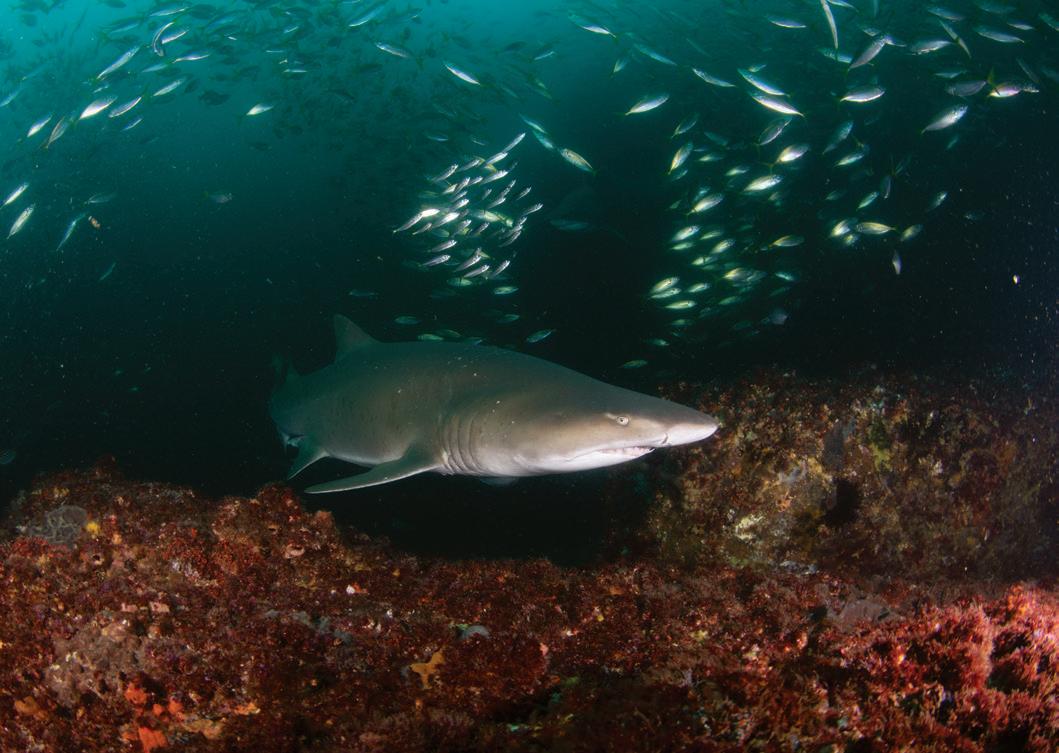
Victoria Above the water, Victoria is perhaps best known for the Great Ocean Road scenic drive which includes the famous 12 Apostles, but below the water is every bit as spectacular, with hundreds of wrecks and numerous jetties that support a wealth of weird and wonderful marine life. Plus, the surreal spectacle of the annual giant spider carb migration.
Explore ex-HMAS Canberra...

MORNINGTON PENINSULA | MELBOURNE The piers at Melbourne’s Port Phillip Bay provide divers with all-weather diving opportunities, being on a bay there’s always a sheltered side where divers can get in and enjoy interacting with resident critters. None more popular than the annual spider crab migration made famous by David Attenborough’s Blue Planet II, with the Rye Pier as the famous ‘go to’ dive site. Additional to this annual event, there are an incredible array of colourful nudibranchs, with the Blairgowrie Pier/Marina as a destination of choice for the sea slug fanatics. These aren’t to be outdone by our state marine emblem, the weedy sea dragon commonly encountered around the Portsea Pier.
Bay Play offer trips to all of the best dive sites in the area. www.bayplay.com.au
PHILIP BAY WRECKS | MELBOURNE If the pursuit of rusty metal floats your boat (or sunk it, in this case), Melbourne has it all! From historic wrecks inside the bay such as the Eliza Ramsden through to a fleet of World War One British J-class submarines, scuttled after decommissioning, to the more recent and purposely created artificial reef in the ex-HMAS Canberra. From 8m of depth to its resting depth of 29m, the Canberra is a great fun dive for divers of all levels. With 138 metres of wreck to explore across numerous levels, this is a magnet for divers and marine life alike.
Scuba Culture offer regular trips to the area’s wrecks and the piers of the Mornington Peninsular. www.scubaculture.com.au
Blairgowrie Pier/Marina
Under Rye Pier ...inside and out

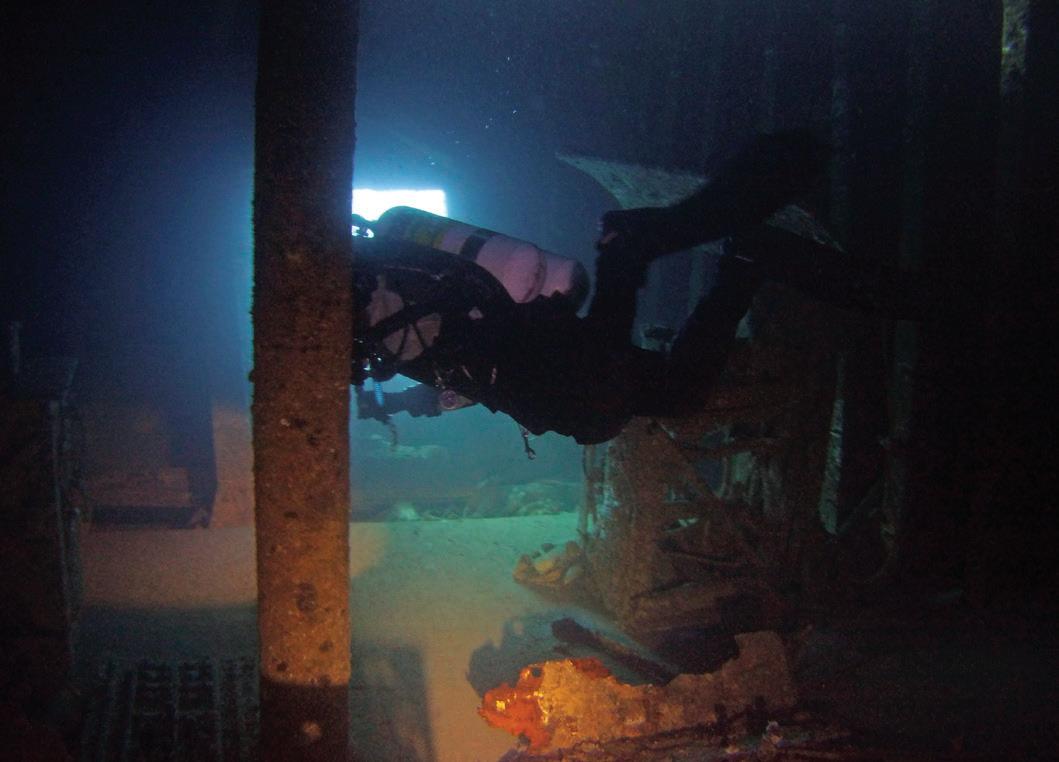


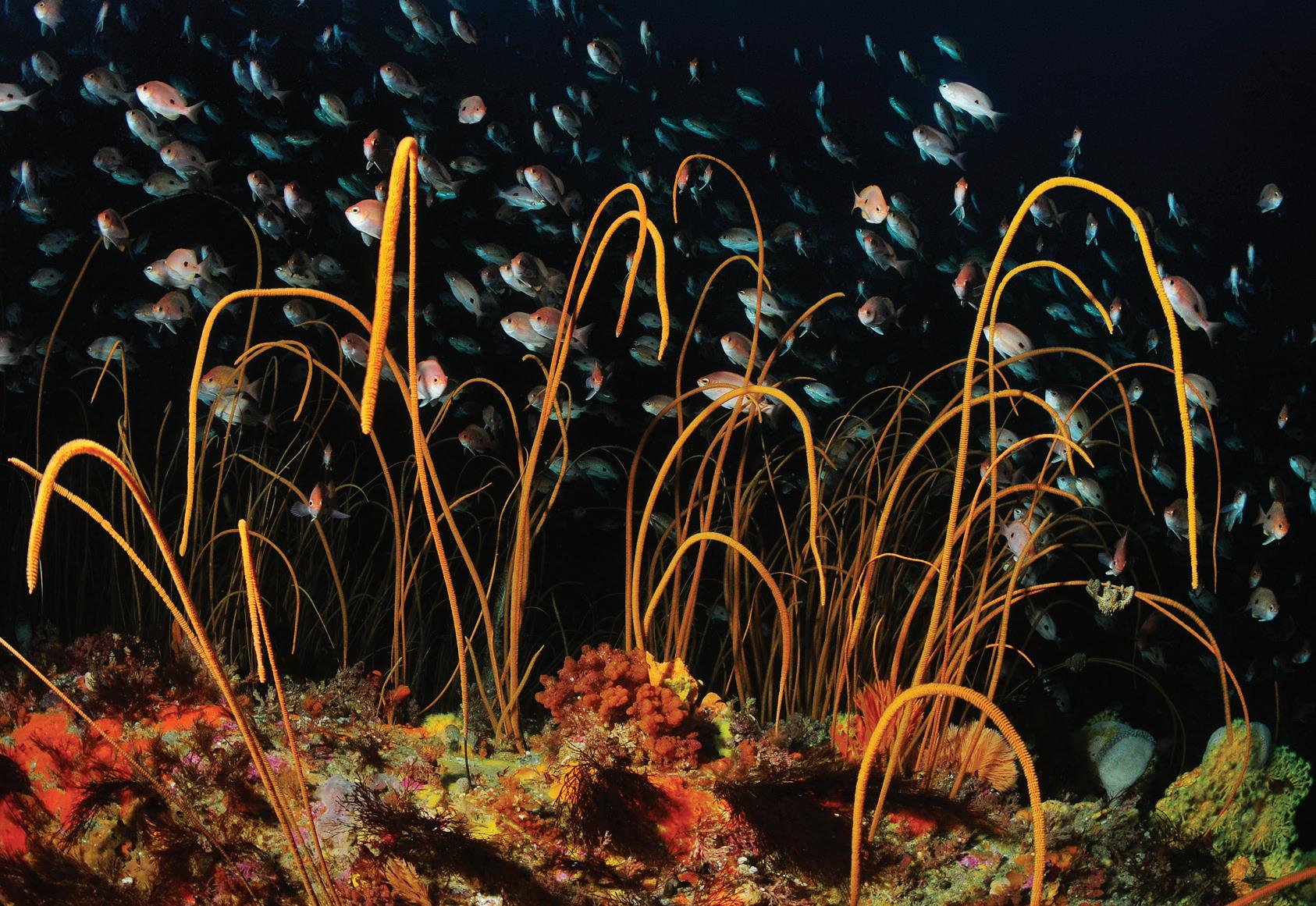
Vibrant reefs await Tasmania With more than 4,850km of coastline and 45,000 hectares of marine reserves, the clear coastal waters of Tasmania offer some of the best temperate diving in the world. From the dramatic walls at Bicheno to the impressive wreck of the SS Nord. Marine life is also plentiful, as dolphins, seals and even penguins call the brisk waters of Tasmania home. Plus of course, the weedy sea dragon - the specimens found in Tasmania are the largest and the most colourful.
TASMAN PENINSULA | EAGLE HAWK NECK The Neptunes are a pristine, wild and rugged paradise – an elemental tour de force – where the planet’s most-amazing prehistoric survivor congregates. Male great whites (up to five metres) inhabit the islands all year round. The seal pups are born in summer (December to January), but don’t start entering the ocean until winter (April to August). That’s when the giant female great whites (up to six metres) come to the Neptunes. That extra metre almost doubles their bodyweight. They are incredible creatures.
The Tasman Peninsula region offers huge caves, tunnels and canyons, particularly in Waterfall Bay, an area well known for its sea caves. The largest, Cathedral Cave, which is the largest sea cave system in Australia, consists of a massive entrance (maximum water depth 21m), extending back into smaller caverns with narrow tunnels and cross passages. The walls are covered with brightly coloured invertebrates typically found in much deeper water. In addition, there are stunning sponge gardens, the impressive wreck of the SS Nord and colonies of the ever-playful fur seals.
Eagle Hawk Dive Centre is open for business and are taking customers to some of Tasmania’s favourite dive sites.
South Australia Perhaps best known for cage diving with great white sharks, this state has so much more to offer. The rugged coastline provides a host of excellent diving opportunities. There is the picturesque Kangaroo Island, the macro diver’s favourites Port Hughes and Edithburgh jetties on the Yorke Peninsula, and unique to South Australia, the amazing giant cuttlefish aggregation near Whyalla each winter!
NEPTUNE ISLANDS | PORT LINCOLN www.eaglehawkdive.com.au
Rodney Fox Shark Expeditions have resumed their tours to see these magnificent creatures. www.rodneyfox.com.au
Giant cuttlefish
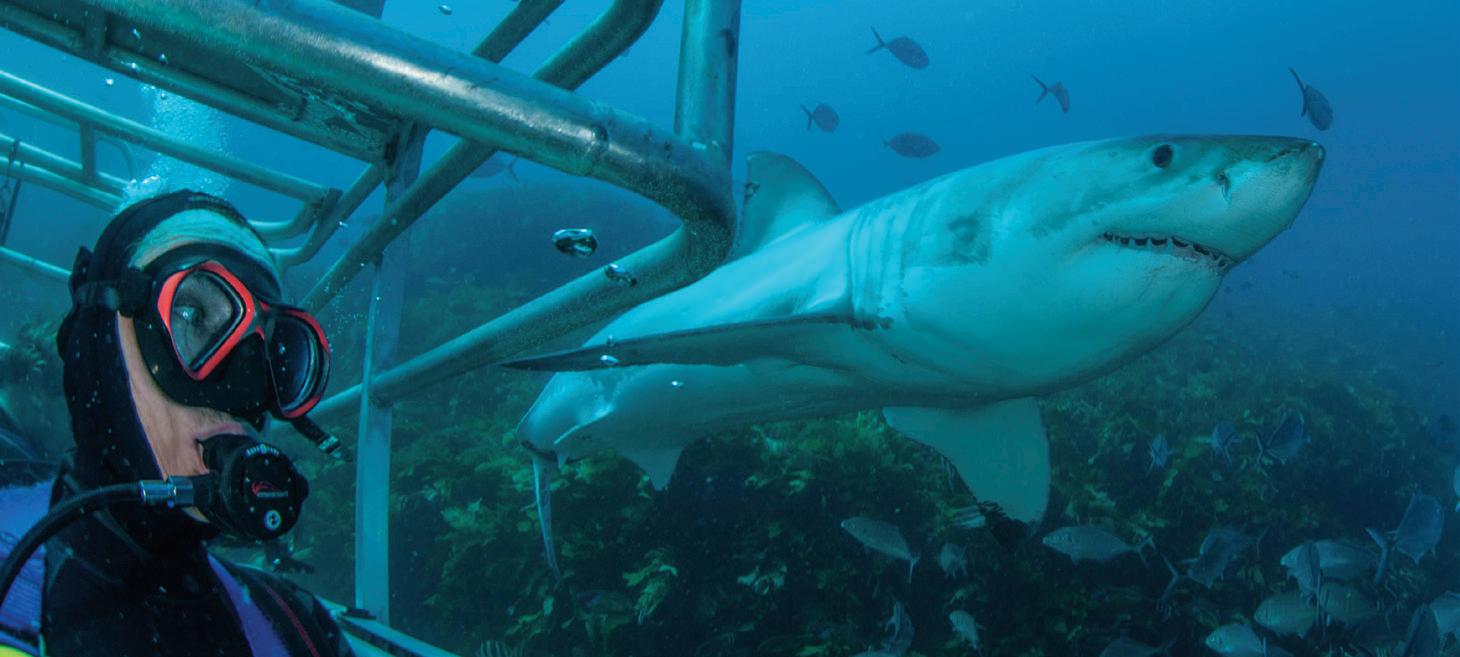

Great white shark

Topside is stunning too
FLEURIEU PENINSULA | ADELAIDE The Fleurieu Peninsula offers a variety of shore dive sites, including Port Noarlunga Jetty, Second Valley, and The Bluff at Victor Harbour. However Rapid Bay is generally regarded as one of Australia’s best jetty dives, and although you can dive it from the shore, the best part of this large dive site is nearly 500 metres offshore. It is therefore most easily accessed by boat. It is one of the best spots for sighting the unique leafy sea dragon. Rapid Bay is also the site of the ex-HMAS Hobart, a stunning coral encrusted wreck.
Underwater Sports visit all of the best dive sites in the Adelaide region. www.underwatersports.com.au
Western Australia This vast state has an embarrassment of riches when it comes to diving. It is home to the longest fringing reef in the world, Ningaloo, the untouched Rowley Shoals and the remote Abrolhos Islands. In addition to this is highly regarded wrecks of the ex-HMAS Swan and ex-HMAS Perth, Rottnest Island, Murion Island, Point Murat Navy Pier, an annual humpback whale migration and whalesharks galore.

Whaleshark

Huge shoals of fish are a common sight
NINGALOO REEF | EXMOUTH Ningaloo Reef has it all! This sprawling reef offers pristine corals a remarkable amount of tropical fish and the chance of some spectacular, big animal encounters. This UNESCO World Heritage Reef is home to turtles, reef sharks and stingrays, manta rays, dugongs and humpback whales. Plus, the biggest fish in the sea, the whaleshark, feasts here for six months following the annual coral spawning.
Exmouth Dive operates daily trips out to the reef and for whaleshark swims. www.exmouthdiving.com.au
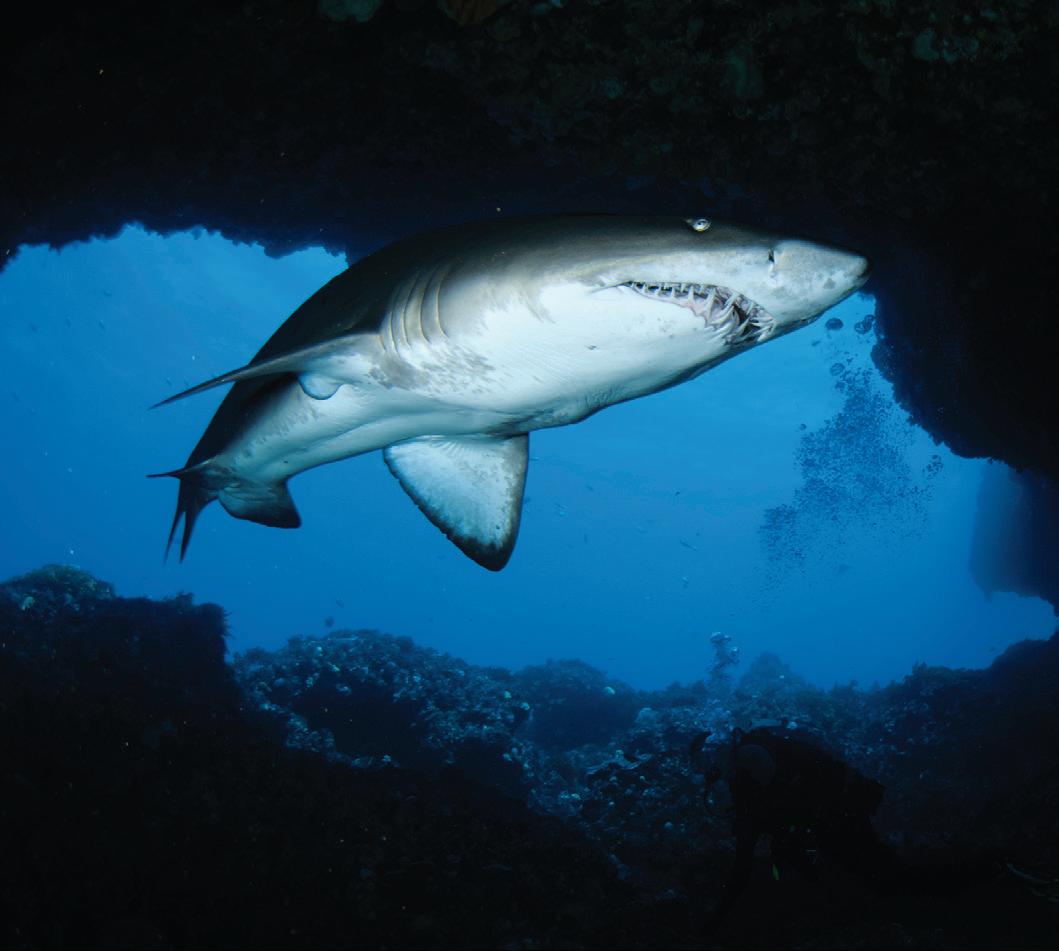
Grey nurse shark Colourful anemones and corals

ROTTNEST ISLAND | PERTH Rottnest Island is located a stone’s throw from the city of Perth. This beautiful island is home to a myriad of wildlife, including a fur seal colony, vibrant corals and numerous shipwrecks. The other very different feature of diving around Rottnest and surrounding areas is that the reef is mainly made of limestone. This means lots of caves and swim-throughs as well as a whole new range of marine species which come with this type of reef. Underwater caves which lead from cave to cave and cavern to cavern make some dives feel like you are in a different world. The limestone reef structure differs to the boulder type reef of the south west and it does offer some fantastic underwater landscapes and topography.
Perth Scuba are taking divers out to the stunning Rottnest island once again. www.perthscuba.com
CONCLUSION I have only just scratched the surface of the wealth of fantastic dive destination that this diverse country offers. There has never been a better opportunity to experience this diving paradise, so now is the time to plan a road trip or jump on a flight, before the crowds of international tourist return. n










